
HOME





HOME
|

|

|

|

|
|
P R O F I L E |
||||
|
 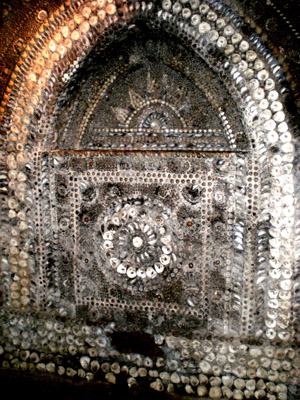 Margate Shell Grotto
Margate Shell GrottoGrotto Hill Margate Kent United Kingdom CT9 2BU The grotto is located near the town centre of the seaside resort of Margate. The visitor centre is a small shop premises on Grotto Hill and access to the grotto is down some steps within the centre. The grotto comprises an underground network of decorated passages and chambers with a length of 106 feet. It is constructed within the chalk bedrock and lies about 2 metres below ground level. Much work has been done on identifying the extensive shell work of the grotto, with a view to ascertaining its origins and its use. What is known is the history of the grotto since 1835 when it came to light as a result of workmen digging in Belle Vue Cottage on Danes Road nearby. The land was rented to a Mr James Truelove at the time, a schoolmaster at Dane Hill Academy for Boys and the intention was to 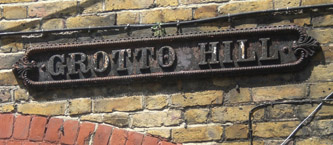 open a new Academy for Girls at the cottage. He subsequently purchased the property in 1837. open a new Academy for Girls at the cottage. He subsequently purchased the property in 1837.
Current knowledge suggests that the grotto was constructed in the early 1800s by the Bowles brothers who lived in the cottage adjacent to the grotto site. Thomas Bowles elder brothers, George and Austen went to America c. 1812, blocking the entrance before leaving. In the 1820s a neighbour, Captain Easter, opened a pleasure gardens here. Easter was aware of the grotto. He apparently encouraged Truelove to purchase the property as there was a valuable asset there. Truelove, in exploring this possibility likely put his son down the hole to discover precisely what existed underground. Once Truelove had identified the grotto as a potential asset, repairs were carried out, using shells gathered locally by two of his pupils. It opened to the public shortly afterwards in 1838. 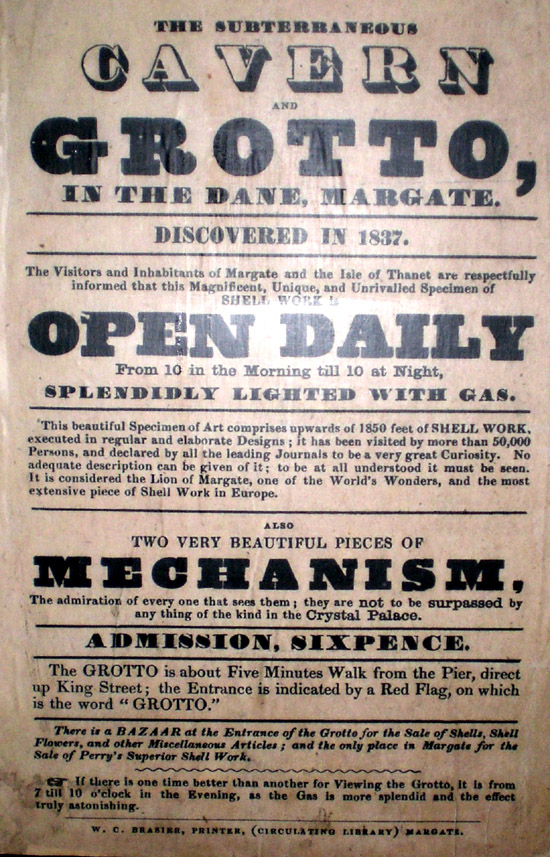
The decoration of the grotto has absorbed researchers for decades and numerous interpretations have been put on the ornamentation. Using an estimated 4.6 million shells, the style has been attributed to many ancient cultures and mythologies. Whilst the creators may well have had inspiration from such sources, a scrutiny of the decor and its interpretation is unconvincing. What is apparent is that the shell decorations have suffered over the two centuries since their creation, with dirt, particularly from earlier gas lamp emissions, damage by natural and human causes, repairs and replacement. 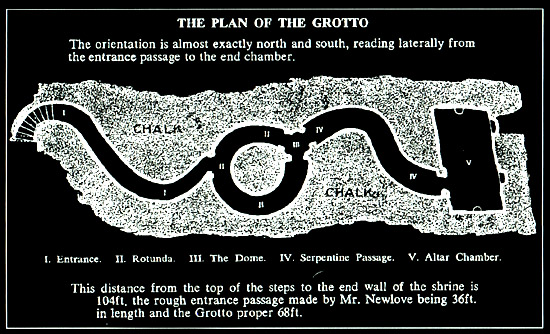 In spite of this the Margate Shell Grotto is an awe-inspiring experience. The grotto was designed to create wonderment in those who experienced it and over the centuries it has ably achieved this. Many published books and papers have resulted, pontificating on its provenance, and countless tourists have enjoyed the brief sojourn into the mythological underworld beneath this popular seaside resort.
In spite of this the Margate Shell Grotto is an awe-inspiring experience. The grotto was designed to create wonderment in those who experienced it and over the centuries it has ably achieved this. Many published books and papers have resulted, pontificating on its provenance, and countless tourists have enjoyed the brief sojourn into the mythological underworld beneath this popular seaside resort.
The future conservation of the grotto is now a major priority. The Shell Grotto lies largely under a residential garden. In the 1980s this garden was concreted over, which resulted in much greater water ingress and greatly exacerbated the damp conditions in the Grotto. It was placed on the English Heritage Buildings at Risk Register in 1999 and is Grade I listed. The owners embarked on an ambitious conservation programme in 2007 with a site survey. Kent County Council funded this stage of works with ten thousand pounds. It became clear that one leaking pipe was responsible for a great deal of damage in the Rotunda and this was promptly re-lined, 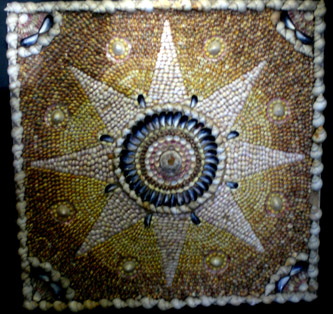 halting decades of deterioration. The combination of the concrete yard and leaking pipe had resulted in the accelerated deterioration of the shell mosaic. Environmental monitoring showed relative humidity levels at more than 90%. Large areas of shells had delaminated from the chalk substrate; some areas had completely disintegrated and fallen away. The poor environmental conditions were also causing demineralisation of the shells. To make matters worse, throughout the 20th century many ill-advised and unsightly repairs had been made to the mosaic. From September 2007 the lead consultant was architect Roger Turner, who guided the project to its completion in 2012, including removal of the concrete overlay. halting decades of deterioration. The combination of the concrete yard and leaking pipe had resulted in the accelerated deterioration of the shell mosaic. Environmental monitoring showed relative humidity levels at more than 90%. Large areas of shells had delaminated from the chalk substrate; some areas had completely disintegrated and fallen away. The poor environmental conditions were also causing demineralisation of the shells. To make matters worse, throughout the 20th century many ill-advised and unsightly repairs had been made to the mosaic. From September 2007 the lead consultant was architect Roger Turner, who guided the project to its completion in 2012, including removal of the concrete overlay.
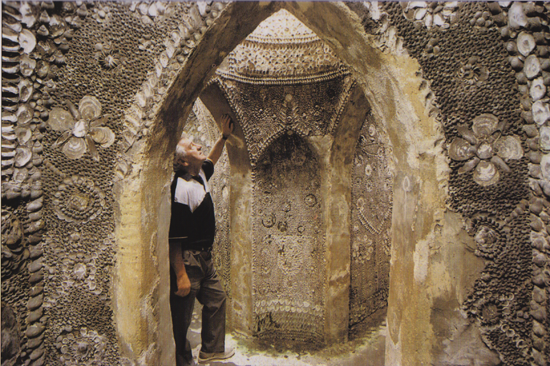
Work continues to ensure that the grotto remains a visitor attraction for future generations. Further reading: Haslam M. (2002) The Shell Grotto at Margate, in Beamon S. Underground Mythology, Able Publishing, Herts. This paper considers the interpretation of the decoration in detail. Marsh P J. (2011) The Enigma of the Margate Shell Grotto, Martyrs Field Pubs. Canterbury. This booklet debates the origins of the grotto and how the decoration might gives clues to this. Illustrations: 1 - 5. Various views of the interior as inspected by the Grotto Grader. 6. Early signage still in situ. 7. Early poster promoting the grotto. 8. Map of the grotto. 9. Reproduction panel showing original colour. 10. Former owner Wolfgang Heigl checks out his custodianship. From Beaumon S, (2002) "Underground Mythology". Website: Click Here ADDITIONAL INFORMATION  
GREAT BRITISH GROTTO GRADING
FACILITIES Access by Road, Access on Foot, Entry Fee, Grotto - just one, Restaurant/Food, Retail Souvenir Shop, Toilets, Tourism Information LANDSCAPE Upland REGION England - Southern THE FEATURES PRESENT +A created provenance that links it to ancient mythology or legend, +Cared for and maintained in good condition, +Dark and mysterious chambers and cave like spaces, +Fossils and/or shells incorporated into the decor, +Internal stonework that is natural, recycled or simulated to give a subterranean decor, GRADED FIVE |
||||
|